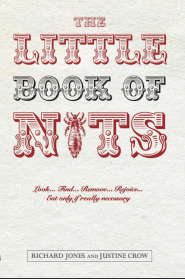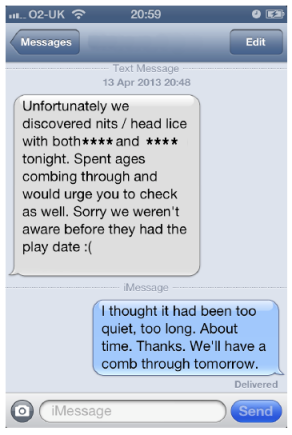There is a saying in my extremely small world, born out of experience – when the going gets tough, the lice get going. When I say they get going, I mean it in the ‘sleeves rolled up and dig in’ sense, as opposed to b*ggering off when there is work to do.
Throughout my career as a working mum I learned that just at the point where I was about to crack and was unable to take any more, no really, absolutely, any full stop more, I’d catch a rogue child scratching out of the corner of my weeping eye.
Up all night with a vomiting baby, car broken down, bailiff at the door (you think I’m joking) and cat dying – and that was just one Wednesday in May – I spot the tell-tale itch, check the scalp in question and, bingo! the job just got even harder.
I had my sister on the phone recently and she sounded utterly exhausted. She’d finally moved house miles away from her old address, having packed up herself in between her paid working hours and sorting out my neice and nephew with their daily requirements of school etc. Her husband works abroad and had cancelled coming over for the ‘completion’ at the last minute due to company commitments and she had reached the very final hurdle only to discover a mistake in the sums and a shortfall on the very last day of a shedload of money. It was at that moment, sobbing and stressed, she tussled her son’s hair and realised it was crawling.
She was a different woman to the one I had seen not three weeks earlier at Jamie Oliver’s Italian place among the skyscrapers of Canary Wharf. Then my sister was full of hope and plans for the new house. It was all yet to happen. Let’s celebrate, she suggested, and we had Bellinis while our children lounged around enjoying eachothers cousinly company, teasing eachother with breadsticks and sharing the fun of Jamie’s silly ViewMaster children’s menus. Happy days. It was all going so well.
Now she was faced with the prospect of having to comb the kids’ heads over and over as well as unpacking boxes and shuffling furniture alone. Good thing we all went out for a meal together, I said in an attempt to comfort her down the phone. We had such a lovely afternoon, eh? And it was all thanks to you. By the way, I got some super pics of the children. I will email them to you to cheer you up..
And before I did, I flicked through the photos. I could do with a little reminding myself after a hectic week coupled with a sore throat. There was us two raising our peach juice and sparkling wine, there was my quid ink pasta, yum, and, oh, there’s a brilliant one of my son showing her son how to make the ViewMaster work by pressing down the lever, heads together…. Oh sh*te.











